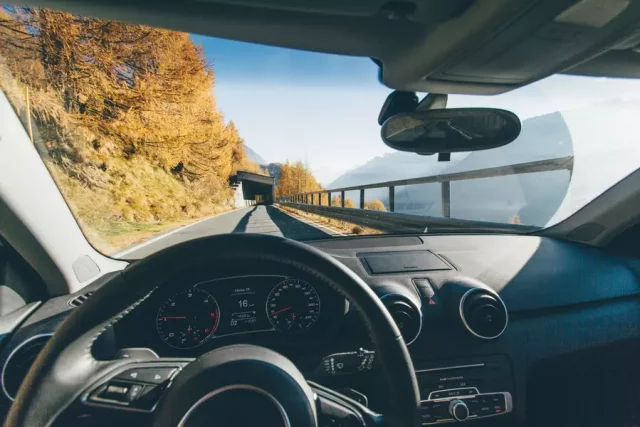Driving around sharp turns and steep hills can be intimidating, especially if it’s your first time going through the mountains.
Developing a plan and preparing your vehicle for driving in the mountains will put your mind at ease. You can take some preparedness steps to help you enjoy your ride and not worry about what will happen.
Be Better Safe Than Sorry
Survival gear is often necessary on long road trips, especially in the mountains. You never know, you might get into a wreck, and the tow truck can’t get to you for a few hours.
Heaven forbid you should get in a wreck with no cell signal, but if you do, an emergency roadside kit full of survival gear will help you get through a few days.
A good emergency kit includes a seatbelt cutter, first aid kit, food, drinking water, and several other items. You can learn how to make your own emergency roadside kit.
Check The Weather
Before embarking on your journey, look ahead a few days to ensure the weather looks good.
Unfortunately, no one can give a 100% accurate prediction of the weather. You can, however, see if any large storm systems are moving through your path. If there is, it may be time to re-plan your trip.
Be A Prepared Driver
You can do many things to make yourself a prepared driver. You can’t prepare for everything that will happen on the roads in the mountains, but you can check over some things on your vehicle to prepare yourself for the worst.
Check over your vehicle
To be the most prepared for your journey through the hills, you should check over your entire vehicle. Make sure your headlights, blinkers, and windshield wipers work properly.
You can also look at your tires to make sure none of them are bald or leaking air. Sometimes an air leak isn’t noticeable until you start driving.
Gas
Sometimes you can’t find gas stations for miles while driving through the most remote part of the mountains. Be sure to fill up before you start on your journey. If you enter the mountains and see a gas station, fill up again.
Spare tire
A spare tire should be in your roadside emergency kit, but it’s so essential it needs its own section. Most vehicles come with a doughnut, which is typically smaller and less durable than your other tires.
Make sure you have a full-size tire where your spare tire is supposed to go. You should only drive for 50 miles with a doughnut on your vehicle.
Mountainous areas can have a few tire shops here and there. Even then, they could be booked solid for several days.
You won’t need to worry about getting stranded or paying hefty towing fees if you have a full spare tire.
Headlights
Lighting can be the difference between life and death when mountain driving—headlights alert oncoming traffic. You should have your lights on if it’s raining, dark, cloudy, or foggy outside.
Be Aware Of Wildlife
Wildlife in the mountains is a little different than wildlife in the city. Depending on which mountains you drive through, you may come across moose, dear, or elk. All these large animals can jump out of the woods and across your path, exposing you to a hazard.
There’s not too much you can do about dear running into your vehicle, but there are ways to be more cautious. Always drive with your headlights on when appropriate and keep an eye out for movement in the woods.
Whatever you do, don’t swerve. Swerving can lead to even bigger wrecks or even cause you to flip your vehicle.
Stay alert
Animals aren’t the only things that should make you cautious. It would help if you kept an eye out for other vehicles, debris on the road, or potholes.
Drive when you are most alert, preferably after a night of good quality sleep, and avoid driving late at night if possible.
Don’t Burn Out Your Breaks
Going down hills and around sharp turns will burn out your breaks, especially in the mountains. Try tapping your breaks down steep hills instead of constantly holding them down.
Mountains have sharp turns, so slow down before you enter the turn. If you push on your breaks in the middle of the turn, it will cause you to lose control of your vehicle. Preparing for the turn by breaking beforehand will offer you more control so you can ease into the curvy roads.
Keep Your Engine From Overheating
Steep hills are a huge concern amongst mountain travelers and threaten to overheat your car’s engine. However, you can help prevent overheating in a few ways.
- Pull over at a rest stop or a scenic view and turn your vehicle off to give your engine time to cool down.
- If your car is overheating, turn off the AC unit. AC units can heat your engine when they are running. Don’t worry, you don’t have to live without the AC the whole trip, just when you travel up hills.
- Maintain speed while heading up the hill by shifting into a lower gear.
Plan Ahead
Map out the road trip, even if you have google maps to follow. It helps to know what kind of roads are ahead of you.
You won’t always have a good cell connection in the mountains, and the GPS on your phone could malfunction. So print out a hard copy of where you go, just in case. A hard copy of the directions will also set your mind at ease.
Be Aware Of Climate Change
Be aware that mountains can have crazy climate changes. You can go from reasonably warm weather at the bottom of the mountain and blizzards as you enter the top. Again stock up on your roadside emergency kit to be prepared for drastic changes.
Before You Go
Even though you are now ready to head off to the mountains in your fully prepared vehicle, obstacles still threaten your safety. You can’t always avoid what will happen on the road, but you are prepared to recover from a car crash if it does happen.














